Boat Engine Ignition System Guide
Short on time? Hear the article’s key takeaways in this 6-minute audio overview.
Welcome to your comprehensive guide to boat engine ignition systems! This complete guide covers everything from basic operation principles to advanced troubleshooting techniques, expert maintenance tips, and performance optimization strategies. Whether you're a seasoned boat owner, marine technician, or new to marine engines, you'll find detailed technical insights and practical solutions to keep your ignition system running at peak performance.
How Boat Engine Ignition Systems Work
The ignition system is the heart of your boat's engine, a complex network of components working in concert to create the spark that brings your marine engine to life. Understanding how this system operates is the first step toward effective maintenance and troubleshooting. At its core, the boat engine ignition system is responsible for generating a high-voltage pulse of electricity and delivering it to the spark plugs at precisely the right moment. This electrical spark ignites the fuel-air mixture in the engine's cylinders, creating the controlled explosion that drives the pistons and, ultimately, propels your boat through the water. The performance of your engine is inextricably linked to the health of its ignition system. A well-maintained system ensures reliable starting, smooth running, and optimal fuel efficiency.
The main components of a typical boat ignition system include the battery, ignition switch, ignition coil, spark plugs, and the wiring harness that connects them all. In traditional systems, a distributor is also a key player, while modern electronic systems rely on a control module. The process begins when you turn the key in the ignition switch. This allows a low-voltage current to flow from the battery to the ignition coil. The coil then acts as a transformer, converting the low voltage into a high-voltage charge. This high-voltage charge is then sent to the spark plugs, which create the spark that ignites the fuel. The timing of this spark is critical for engine performance and is controlled by either a mechanical distributor or an electronic control unit.
Traditional ignition systems, often found in older boats, use a set of breaker points and a condenser within the distributor to time the spark. While effective, these systems require regular maintenance and are prone to wear. Modern electronic ignition systems, on the other hand, use a control module and sensors to manage spark timing with much greater precision. This results in improved reliability, better fuel economy, and reduced emissions. To maintain factory-level performance, especially with these advanced systems, choosing replacement parts built to the same specifications is crucial. JLM Marine, an original equipment manufacturer with its own factory since 2002, produces OEM/ODM components for leading international marine-engine brands. Their direct-to-customer model provides factory-level pricing for high-quality parts. Whether you have a traditional or modern system, common issues often stem from fouled spark plugs, a weak battery, or a faulty ignition coil. Regular inspection and maintenance of these components are key to a healthy ignition system.
Key Components of Boat Ignition Systems
A boat's ignition system is a symphony of interconnected parts, each playing a critical role in the engine's operation. The ignition switch, often taken for granted, is the gateway to the entire process. It's more than just a keyhole; it's a multi-position switch that controls the flow of electricity from the battery to the various electrical systems on your boat, including the ignition system. The spark plugs are the final link in the chain, responsible for creating the actual spark that ignites the fuel. The size of the spark plug gap and its cleanliness are critical factors in engine performance. A fouled or improperly gapped spark plug can lead to misfires, poor fuel economy, and even engine damage.
The ignition coil is the powerhouse of the system, transforming the battery's low 12-volt charge into the 20,000-plus volts needed to create a spark. For boats with older, traditional ignition systems, the distributor is a key component. It directs the high-voltage charge from the ignition coil to the correct spark plug at the precise moment for ignition. Finally, the battery and its associated wiring form the foundation of the ignition system. A weak or dead battery is one of the most common reasons for a boat failing to start. The wiring harness must be in good condition, free from corrosion and damage, to ensure a reliable flow of electricity to all components. Understanding the function of each of these parts is essential for effective boat engine ignition system troubleshooting.
Understanding Marine Engine Management
Marine engine management has evolved far beyond the simple ignition systems of the past. Today's modern marine engines are equipped with sophisticated marine engine management systems that control not just the ignition timing, but also the fuel delivery, emissions, and other critical engine functions. These systems use a network of sensors to monitor various engine parameters, such as engine speed, load, temperature, and throttle position. This data is then fed into an electronic control unit (ECU), which makes real-time adjustments to optimize engine performance, fuel efficiency, and emissions.
Effective marine engine management involves more than just the ignition system. It encompasses a holistic approach to engine care, including regular maintenance, the use of proper monitoring tools, and smart fuel management strategies. Many modern boats are equipped with multi-function displays that provide the operator with a wealth of information about the engine's health, including diagnostic trouble codes that can help pinpoint potential issues before they become serious problems. Regular oil changes, filter replacements, and adherence to the manufacturer's recommended maintenance schedule are all part of a comprehensive engine management plan.
Fuel management is another critical aspect. This includes using the correct type and octane of fuel for your engine, as well as keeping the fuel system clean and free of water and debris. Temperature and pressure monitoring are also vital. Overheating can cause serious engine damage, so it's important to keep an eye on the temperature gauge and ensure the cooling system is functioning properly. Some advanced systems even feature hybrid ignition technologies that combine the best of different ignition types to maximize performance and efficiency across a wide range of operating conditions.
Common Ignition System Types in Boats
While the basic principle of creating a spark to ignite fuel remains the same, there are several different types of ignition systems found in boats. The simplest is the traditional points ignition system, which uses a set of mechanical breaker points to interrupt the flow of current to the ignition coil, causing it to produce a high-voltage spark. While these systems are relatively simple and inexpensive, they require frequent maintenance and are prone to wear.
A significant upgrade from points ignition is the electronic ignition system. These systems replace the mechanical points with a solid-state electronic module, which provides much more precise and reliable spark timing. This results in improved starting, better fuel economy, and reduced maintenance. Many boat owners with older vessels choose to upgrade from points to an electronic ignition system for these reasons.
Capacitor Discharge Ignition (CDI) systems are another common type, particularly in outboard motors. CDI systems store a high-voltage charge in a capacitor and then release it to the ignition coil in a very short, high-energy burst. This produces a very hot, intense spark that is ideal for high-performance applications. Digital Spark Ignition (DSI) systems are a further advancement, using a microprocessor to control the spark timing with even greater precision. DSI systems can adjust the spark timing based on a variety of factors, including engine speed, load, and temperature, to optimize performance and fuel efficiency.
Finally, some modern marine engines feature hybrid ignition systems that combine elements of different ignition types to provide the best of all worlds. For example, a system might use a CDI for starting and low-speed operation, and then switch to a different type of ignition for high-speed cruising. These advanced systems are a key part of modern marine engine management and contribute to the impressive performance and efficiency of today's boats.
Essential Boat Ignition Components Explained
To truly master your boat's maintenance, a deeper understanding of its ignition components is essential. These parts, from the humble ignition switch to the powerful starter motor, all play a vital role in your boat's performance and reliability. Knowing what each component does and how it interacts with the others will empower you to diagnose problems more effectively and make informed decisions about repairs and upgrades. This knowledge will not only save you time and money but also give you the confidence to handle unexpected issues on the water. Let's take a closer look at the key players in your boat's ignition system.
The ignition switch is your primary point of contact with the engine. It's a multi-functional switch that not only starts the engine but also powers up your boat's electrical systems. The ignition coils are the unsung heroes of the system, transforming the low voltage from the battery into the high-voltage charge needed to create a spark. The spark plugs, of course, are where the magic happens, delivering that spark to the combustion chamber. The battery is the heart of the electrical system, providing the initial power to get everything started. Finally, the ignition timing system, whether mechanical or electronic, ensures that the spark occurs at the perfect moment for optimal combustion. Effective electrical systems management is the glue that holds all of this together, ensuring that each component receives the power it needs to function correctly.
Role of the Ignition Coil
The primary function of the ignition coil is to act as a high-voltage transformer. It takes the 12-volt current from the battery and amplifies it to a powerful 20,000-40,000 volt charge. This high-voltage pulse is essential for creating a strong, hot spark at the spark plugs, which is necessary to ignite the fuel-air mixture in the engine's cylinders. Without a properly functioning ignition coil, your engine will not start or run.
An ignition coil consists of two sets of windings, the primary and secondary, wrapped around an iron core. When you turn the ignition key, current flows through the primary winding, creating a magnetic field. When the current is interrupted (by either the points in a traditional system or an electronic module), this magnetic field collapses, inducing a high-voltage current in the secondary winding. This high-voltage charge is then sent to the spark plugs. The ignition coil's ability to perform this voltage transformation efficiently and reliably is critical for engine performance.
Ignition coils are designed to be highly adaptable and can be found in various forms to suit different ignition systems. Some systems use a single coil for all cylinders, while others have a dedicated coil for each spark plug. Regardless of the configuration, the ignition coil must manage the electrical voltage effectively and work in perfect timing with the starter motor and the rest of the ignition system. Signs of a failing ignition coil include difficulty starting the engine, misfires, poor fuel economy, and a noticeable loss of power.
Importance of Spark Plugs
Spark plugs are small but mighty components that play a crucial role in your boat's engine. Their job is to create the spark that initiates combustion, the process that powers your engine. The quality and condition of your spark plugs have a direct impact on engine performance, fuel efficiency, and reliability. Worn or faulty spark plugs can cause a host of problems, from difficulty starting and rough idling to reduced power and increased emissions.
Regular inspection and maintenance of your spark plugs are essential for keeping your engine running smoothly. Over time, spark plugs can become fouled with carbon deposits, oil, or fuel, which can weaken the spark and lead to misfires. The gap between the spark plug's electrodes can also widen over time, which can also affect spark quality. It's important to check the spark plugs regularly for wear and to clean or replace them as needed.
There are many different types of spark plugs available, each with its own unique characteristics. It's important to use the correct type of spark plug for your engine, as specified by the manufacturer. The condition of your spark plugs can also provide valuable clues about the health of your engine. For example, black, sooty deposits on the plugs can indicate a rich fuel mixture, while white, ashy deposits can indicate a lean mixture. By learning to "read" your spark plugs, you can identify potential problems early on and take steps to address them.
Functionality of the Starter Motor
The starter motor is the component that gets your engine turning when you turn the ignition key. Its critical role is to convert electrical energy from the battery into mechanical energy, which is used to crank the engine over. The starter motor engages with the engine's flywheel, a heavy toothed wheel attached to the crankshaft. The starter motor's gear meshes with the teeth on the flywheel, and as the starter motor spins, it turns the flywheel, which in turn rotates the crankshaft and starts the engine's combustion cycle.
The timing of the starter motor's engagement with the flywheel is critical. A starter solenoid, an electromagnet, is responsible for pushing the starter gear forward to engage with the flywheel and for completing the electrical circuit to the starter motor. The starter motor requires a significant amount of electrical power to crank the engine, especially on larger engines. This is why a healthy, fully charged battery is so important.
Common issues with starter motors include worn brushes, a faulty solenoid, or a damaged gear. A clicking sound when you turn the key is a common sign of a failing starter solenoid. A grinding noise may indicate a problem with the starter gear or the flywheel. If your engine cranks over slowly, it could be a sign of a weak battery or a failing starter motor. Regular inspection of the starter motor and its electrical connections can help prevent these issues.
Overview of Wiring Harness and Electrical Systems
The wiring harness is the central nervous system of your boat's electrical system. It's a bundle of wires that connects all of the electrical components, from the battery and ignition system to the lights, gauges, and accessories. The wiring harness plays a critical role in ensuring that electricity is delivered safely and reliably to where it's needed. A faulty wiring harness can cause a wide range of problems, from intermittent electrical issues to complete system failure.
Effective electrical systems management starts with a high-quality wiring harness. Marine-grade wiring is essential for boats, as it is designed to withstand the harsh marine environment, including exposure to water, salt, and vibration. The materials and configuration of the wiring harness are also important. Tinned copper wire is the preferred choice for marine applications, as it is highly resistant to corrosion. The connectors used in the wiring harness are another critical component. They must be of high quality and properly sealed to prevent water intrusion and corrosion.
Diagnosing problems with a wiring harness can be challenging, but there are a number of tools and techniques that can help. A multimeter is an essential tool for checking for continuity and voltage at various points in the electrical system. Visual inspection of the wiring harness for signs of damage, such as chafing, cracking, or corrosion, is also important. In recent years, advancements in technology have led to the development of "smart" wiring harnesses that can self-diagnose problems and provide diagnostic information to the operator.
Step-by-Step Guide to Ignition System Troubleshooting
When your boat's engine won't start or is running poorly, the ignition system is one of the first places to look. A systematic approach to ignition system troubleshooting can help you pinpoint the problem quickly and efficiently. Start by observing the symptoms. Is the engine cranking over but not starting? Is it running rough or misfiring? Are there any warning lights on the dash? Answering these questions will help you narrow down the possibilities.
Next, check the basics. Is the battery fully charged and are the connections clean and tight? A weak battery is a common cause of ignition problems. Inspect the spark plugs for signs of wear or fouling. A visual inspection can often reveal the source of the problem. If the battery and spark plugs look good, you can move on to testing the ignition coil with a multimeter. This will tell you if the coil is producing the proper voltage.
Testing the ignition switch and wiring is the next step. A faulty switch or a loose connection can interrupt the flow of electricity to the ignition system. Finally, if you've checked all of the components and are still having problems, it's time to review the ignition timing. Incorrect timing can cause a host of engine performance issues. For modern engines with an onboard computer, an OBD-II scanner can be a valuable tool for reading diagnostic trouble codes and identifying the source of the problem.
Diagnosing Common Ignition Problems
Diagnosing ignition problems often starts with a simple visual inspection. Look for obvious signs of trouble, such as loose or corroded wires, cracked spark plug insulators, or a damaged distributor cap. A quick check of the battery is also in order. Use a voltmeter to ensure the battery is fully charged. A reading of 12.6 volts or higher indicates a healthy battery.
A spark test is a simple way to determine if the ignition system is producing a spark. You can do this by removing a spark plug, grounding it against the engine block, and cranking the engine. If you see a strong, blue spark, you know the ignition system is working. If there's no spark or the spark is weak, you'll need to investigate further. A weak spark could indicate a problem with the ignition coil, spark plugs, or wiring.
If you have spark but the engine still won't start, the problem may be with the fuel supply. Check to make sure you have fuel in the tank and that the fuel filter is not clogged. It's also important to check any safety features that may be preventing the engine from starting, such as a lanyard kill switch. For modern engines, an OBD-II scanner can be an invaluable diagnostic tool. It can read error codes from the engine's computer, which can help you pinpoint the exact cause of the problem. A diagnostic checklist can be a helpful tool for keeping track of your troubleshooting steps.
Testing the Ignition Coil and Spark Plugs
Before testing any ignition components, it's important to take proper safety precautions. Disconnect the battery to prevent accidental shocks. When testing the ignition coil, use a multimeter to measure the resistance of the primary and secondary windings. Compare your readings to the manufacturer's specifications. A reading that is outside of the specified range indicates a faulty coil.
Inspecting the spark plugs is another important step. Look for signs of wear, such as rounded electrodes or a wide gap. Also, check for fouling from carbon, oil, or fuel. A spark plug's condition can tell you a lot about the health of your engine. If the spark plugs are worn or fouled, they should be replaced. When installing new spark plugs, it's important to use the correct type for your engine and to gap them to the manufacturer's specifications. The spark plug gap is the distance between the center and side electrodes, and it has a significant impact on spark quality.
A spark test can also be used to check the condition of the spark plugs. A strong, blue spark indicates a healthy plug, while a weak, yellow spark suggests a problem. When replacing spark plugs, it's a good idea to apply a small amount of anti-seize compound to the threads to prevent them from getting stuck in the cylinder head. After installing the new plugs, be sure to torque them to the manufacturer's specifications. Proper reassembly is crucial for ensuring a reliable ignition system.
Inspecting the Starter Motor and Wiring Connections
When inspecting the starter motor and its wiring, always begin by disconnecting the battery. This will prevent any accidental starting of the engine. A visual examination of the starter motor can reveal a lot. Look for signs of corrosion, damage, or loose connections. Check the wiring connections to the starter motor and solenoid to ensure they are clean and tight. A loose or corroded connection can prevent the starter motor from receiving the power it needs to crank the engine.
Use a voltmeter to test the voltage at the starter motor. With the key in the "start" position, you should see a voltage reading that is close to the battery voltage. A significant voltage drop indicates a problem with the wiring or connections. Inspect the wiring harness for any signs of damage, such as chafing, cracking, or corrosion. Pay close attention to the areas where the wiring harness is routed near hot or moving parts.
Verifying the ground connection is also critical. A poor ground connection can cause a variety of electrical problems, including a no-start condition. The ground connection should be clean, tight, and free of corrosion. It's a good practice to systematically document your findings as you go through the inspection process. This will help you keep track of what you've checked and can be a valuable resource if you need to seek professional help.
Efficient Boat Electrical System Management
Efficient boat electrical system management is crucial for ensuring the reliability and longevity of your boat's ignition system and other onboard electronics. Your boat's electrical system is a complex network of components that must work together seamlessly. Proper management of this system involves regular maintenance, the use of high-quality materials, and a thorough understanding of how the various components interact.
The key components of your boat's electrical system include the battery, alternator, wiring, switches, and fuses. Each of these components plays a vital role in delivering a steady supply of electricity to where it's needed. Regular maintenance practices, such as cleaning battery terminals, inspecting wiring for corrosion, and testing switches, can help prevent problems before they start. Using marine-grade materials is also essential. Marine-grade components are designed to withstand the harsh marine environment and are more resistant to corrosion and vibration.
Effective battery charge management is another critical aspect of electrical system management. Your boat's battery should be kept fully charged, and the charging system should be regularly inspected to ensure it is functioning properly. Many boaters choose to install a dedicated ignition circuit, which isolates the ignition system from other electrical loads. This can help prevent voltage drops and ensure a reliable spark. Periodic testing of the entire electrical system is also recommended. This can help identify potential problems, such as high resistance in a circuit, before they cause a failure on the water.
Battery Maintenance for Optimal Ignition Performance
Your boat's battery is the heart of its electrical system, and its health is critical for optimal ignition performance. A weak or poorly maintained battery is one of the most common causes of starting problems. Regular battery maintenance is a simple yet effective way to ensure your boat starts reliably every time. Start by regularly inspecting the battery for signs of corrosion on the terminals. Corrosion can create a poor connection and prevent the battery from delivering its full power. Clean the terminals with a wire brush and a solution of baking soda and water.
Ensure that the battery connections are tight and secure. A loose connection can cause arcing and a loss of power. If your battery has removable caps, check the electrolyte level and top it off with distilled water if necessary. Proper storage during the off-season is also important. If you're not going to be using your boat for an extended period, it's a good idea to remove the battery and store it in a cool, dry place on a trickle charger.
The temperature can have a significant effect on battery performance. Cold temperatures can reduce a battery's cranking power, while high temperatures can shorten its lifespan. Keeping the battery in a clean, dry environment can also help prolong its life. By following these simple battery maintenance tips, you can ensure that your boat's ignition system has the power it needs to perform at its best.
The Role of Voltage Amplifiers
In the context of marine ignition systems, a voltage amplifier, often referred to as an ignition amplifier or ignition module, plays a crucial role in enhancing engine performance. These devices are designed to take the relatively low-voltage signal from the ignition's trigger (such as the points or electronic sensor) and amplify it into a more powerful signal that can effectively trigger the ignition coil. The result is a stronger, more consistent spark at the spark plugs.
Performance enhancement studies have shown that a more powerful spark can lead to more complete combustion of the fuel-air mixture. This, in turn, can result in improved fuel efficiency, increased horsepower, and reduced emissions. The correlation between voltage and spark intensity is direct; a higher voltage at the coil results in a hotter spark. This is particularly beneficial in high-compression or high-performance engines, where a weak spark might not be sufficient to ignite the dense fuel-air mixture.
A voltage amplifier also has a stabilizing effect on the ignition system. It can help to smooth out any fluctuations in the trigger signal, resulting in more precise and consistent ignition timing. This is especially important for cold starts, as a stronger spark can help the engine fire up more easily in cold weather. Advanced ignition systems often incorporate sophisticated voltage amplifiers as part of their design. Practical case studies have shown that the addition of a high-quality voltage amplifier can make a noticeable difference in the performance and reliability of a boat's engine.
Keeping Marine Electronics Functional
Keeping your marine electronics functional is essential for safe and enjoyable boating. This includes not only your navigation and communication equipment but also the electronic components of your ignition system. The marine environment is harsh, with constant exposure to moisture, salt, and vibration. These factors can take a toll on electronic components, leading to corrosion, connection failures, and premature failure.
Routine maintenance is the key to keeping your marine electronics in good working order. Regularly inspect all wiring and connections for signs of corrosion or damage. Clean connections with a contact cleaner and apply a dielectric grease to protect them from moisture. Seasonal checks are also important. Before the start of each boating season, it's a good idea to test all of your electronic equipment to ensure it is functioning properly.
Using marine-grade components is another crucial step. Marine-grade electronics are specifically designed to withstand the rigors of the marine environment. They are typically more robust and have better seals to protect against water intrusion. Integrating surge protection into your boat's electrical system is also a wise investment. A surge protector can help to protect your sensitive electronics from voltage spikes, which can be caused by lightning strikes or other electrical disturbances. Finally, keeping a maintenance log can be a helpful way to keep track of what you've done and when. This can be a valuable resource for troubleshooting problems and for planning future maintenance.
Best Practices for Boat Maintenance
Your boat's ignition system plays a critical role in its overall performance and reliability. A well-maintained ignition system will ensure that your engine starts easily, runs smoothly, and delivers optimal power and fuel efficiency. Adhering to a regular boat maintenance schedule is the best way to prevent problems and keep your boat in top condition. This includes not only the ignition system but all of the other critical systems on your boat as well.
Detailed Maintenance Checklist:
- Inspect and clean battery terminals regularly.
- Check spark plugs for wear and proper gap.
- Inspect wiring and connections for corrosion or damage.
- Test the ignition coil's resistance.
- Check the distributor cap and rotor for wear (if applicable).
- Pay attention to any dashboard warning lights.
Using a dielectric grease on electrical connections can help to prevent corrosion and ensure a good connection. Regular inspection of the entire ignition system is the best way to catch small problems before they become big ones. Maintaining the health of your boat's battery is also crucial. A weak battery can cause a host of problems, not just with the ignition system but with all of the other electronics on your boat as well. Finally, always use manufacturer-recommended parts when making repairs. This will ensure that your boat's ignition system continues to perform as it was designed to.
Routine Checks for the Ignition System
Routine checks of your boat's ignition system are essential for preventing breakdowns on the water. The various components of the ignition system work together in a precise sequence, and a failure in one component can affect the entire system. By regularly inspecting the system, you can identify signs of wear or failure early on and take corrective action.
Detailed Inspection Checklist:
- Visual Inspection: Look for any obvious signs of damage, such as cracked wires, loose connections, or corrosion.
- Battery Check: Test the battery's voltage and clean the terminals.
- Spark Plug Inspection: Remove and inspect the spark plugs for wear and fouling.
- Distributor Check (if applicable): Inspect the distributor cap and rotor for wear and tear.
- Wiring Check: Inspect all wiring for signs of chafing, cracking, or corrosion.
Pay close attention to any dashboard warning lights. These lights are there to alert you to potential problems, so don't ignore them. The role of dielectric grease in preventing corrosion cannot be overstated. Apply a small amount to all electrical connections to protect them from the elements. As for frequency, it's a good idea to perform these checks at least once a season, or more often if you use your boat frequently.
Common Signs of Ignition Trouble
Being able to recognize the common signs of ignition trouble can save you from being stranded on the water. If you experience any of the following symptoms, it's a good idea to have your ignition system checked out as soon as possible.
One of the most obvious signs of ignition trouble is difficulty starting the engine. If the engine cranks over but won't start, or if it takes a long time to start, it could be a sign of a weak spark. Unusual engine noises, such as backfiring or popping, can also indicate an ignition problem. These noises are often caused by unburned fuel igniting in the exhaust system.
Dashboard warning lights, such as the "check engine" light, are another clear indication of a problem. Rough idling or stalling can be caused by a variety of issues, but a faulty ignition system is often the culprit. A reduction in fuel efficiency is another common symptom. If you find yourself filling up the tank more often than usual, it could be a sign that your ignition system is not performing at its best. Hesitation during acceleration and unusual smells, such as the smell of unburned gasoline, are also red flags.
How to Clean and Replace Ignition Components
Properly cleaning and replacing ignition components is a key part of maintaining a healthy ignition system. Always start by disconnecting the battery to ensure your safety. When cleaning the ignition coil, use a clean, dry cloth to wipe away any dirt or grime. Avoid using any solvents or cleaners, as these can damage the coil.
To clean or replace the spark plugs, you'll need a spark plug socket. Carefully remove the old plugs and inspect them for wear. If you're cleaning the plugs, use a wire brush to remove any deposits. When installing new plugs, be sure to gap them correctly and use a torque wrench to tighten them to the manufacturer's specifications. Maintaining the ignition wires is also important. Wipe them down with a clean cloth and inspect them for any signs of damage. If the wires are cracked or brittle, they should be replaced.
For boats with a distributor, the distributor cap and rotor should be inspected regularly and replaced if they are worn. Applying a small amount of dielectric grease to the inside of the spark plug boots and the distributor cap terminals can help to prevent corrosion and ensure a good electrical connection. Finally, after cleaning or replacing any components, be sure to securely reconnect everything. A loose connection can cause a host of problems.
Expert Tips for Enhanced Engine Performance
For boat owners looking to get the most out of their engines, optimizing the ignition system can yield significant improvements in performance and efficiency. A well-tuned ignition system can unlock hidden horsepower, improve fuel economy, and provide a more responsive and enjoyable boating experience. Here are some expert tips for enhancing your engine's performance.
The importance of quality spark plugs cannot be overstated. High-quality spark plugs will produce a stronger, more consistent spark, which can lead to more complete combustion and improved engine performance. Consider upgrading to premium iridium or platinum spark plugs for a hotter spark and longer life. Replacing the ignition coil with a high-output coil can also make a noticeable difference. A high-output coil will deliver a more powerful spark, which is especially beneficial in high-performance engines.
Fine-tuning the air-fuel mixture is another way to enhance performance. While this is a more advanced tuning technique, it can yield significant gains in power and efficiency. Upgrading to premium ignition cables can also help. High-performance cables will have lower resistance, which means more energy is delivered to the spark plugs. Maintaining a clean ignition system is also crucial. A clean system will operate more efficiently and reliably. Finally, incorporating diagnostic recommendations from your engine's manufacturer or a qualified marine mechanic can help you identify areas for improvement.
Tuning Your Ignition System for Better Efficiency
Tuning your ignition system is a great way to improve your boat's fuel efficiency and overall performance. One of the most important aspects of ignition tuning is the ignition timing. The timing of the spark has a significant impact on how completely the fuel-air mixture burns. Adjusting the ignition timing can help you find the sweet spot for optimal efficiency. However, it's important to note that adjusting the ignition timing should only be done by someone with experience, as incorrect timing can cause engine damage.
Regularly inspecting the spark plugs is another key part of ignition tuning. As mentioned earlier, the condition of your spark plugs can tell you a lot about the health of your engine. By "reading" your plugs, you can identify if your engine is running too rich or too lean and make adjustments accordingly. Upgrading the ignition coil to a high-output model can also improve efficiency by providing a more powerful spark.
Adjusting the air-fuel mixture is another advanced tuning technique that can improve efficiency. The goal is to achieve the optimal stoichiometric ratio of 14.7:1 (air to fuel). The quality of the fuel you use can also have an impact on efficiency. Using a high-quality fuel with the proper octane rating for your engine is always recommended. Finally, following good maintenance practices, such as regularly changing the oil and filters, can also help to improve efficiency. For those who want to take their tuning to the next level, there are a variety of tuning software and devices available that can help you fine-tune your engine's performance.
The Impact of Quality Components on Performance
The quality of the components in your boat's ignition system has a direct and significant impact on its performance. From the spark plugs to the ignition module, each component plays a critical role in delivering a reliable and powerful spark. Investing in high-quality components can pay dividends in the form of improved performance, better fuel economy, and increased reliability.
Let's start with the spark plugs. Quality spark plugs are made from superior materials and are designed to withstand the high temperatures and pressures of the combustion chamber. They will produce a stronger, more consistent spark, which can lead to more complete combustion and increased horsepower. The ignition coil is another critical component. A high-quality coil will be more efficient at transforming the low voltage from the battery into the high voltage needed to create a spark. This can result in a hotter spark and improved engine performance.
The ignition wires also play a role in performance. High-quality wires will have lower resistance, which means more energy is delivered to the spark plugs. The ignition module, which controls the spark timing, is another key component. A high-quality module will provide more precise and consistent spark timing, which can improve performance and fuel economy. The type of fuel you use can also have an impact. Using a high-quality fuel with the proper octane rating for your engine is always recommended. Finally, it's important to ensure that all of the components in your ignition system are compatible with each other. Using mismatched components can lead to poor performance and even engine damage.
Boat Engine Ignition System FAQs
Here are some frequently asked questions about boat engine ignition systems:
1. What are the signs of a failing ignition system?
Common signs of a failing ignition system include difficulty starting the engine, rough idling, misfiring, reduced fuel efficiency, and a noticeable loss of power. You may also see a "check engine" light on your dashboard.
2. How do I know if my ignition coil is bad?
A bad ignition coil can cause a variety of problems, including a no-start condition, misfiring, and poor performance. You can test the ignition coil with a multimeter to see if it is within the manufacturer's specifications.
3. Can I troubleshoot ignition issues myself?
Many common ignition issues can be troubleshooted and repaired by a boat owner with basic mechanical skills and the right tools. However, if you're not comfortable working on your boat's engine, it's always best to consult a qualified marine mechanic.
4. How often should I inspect my boat's ignition system?
It's a good idea to inspect your boat's ignition system at least once a season, or more often if you use your boat frequently. Regular inspections can help you catch small problems before they become big ones.
5. What tools do I need for ignition system maintenance?
Some essential tools for ignition system maintenance include a good set of sockets and wrenches, a spark plug socket, a gap gauge, a multimeter, and a torque wrench. It's also a good idea to have a can of contact cleaner and a tube of dielectric grease on hand.
About JLM Marine
Founded in 2002, JLM Marine has established itself as a dedicated manufacturer of high-quality marine parts, based in China. Our commitment to excellence in manufacturing has earned us the trust of top marine brands globally.
As a direct supplier, we bypass intermediaries, which allows us to offer competitive prices without compromising on quality. This approach not only supports cost-efficiency but also ensures that our customers receive the best value directly from the source.
We are excited to expand our reach through retail channels, bringing our expertise and commitment to quality directly to boat owners and enthusiasts worldwide.

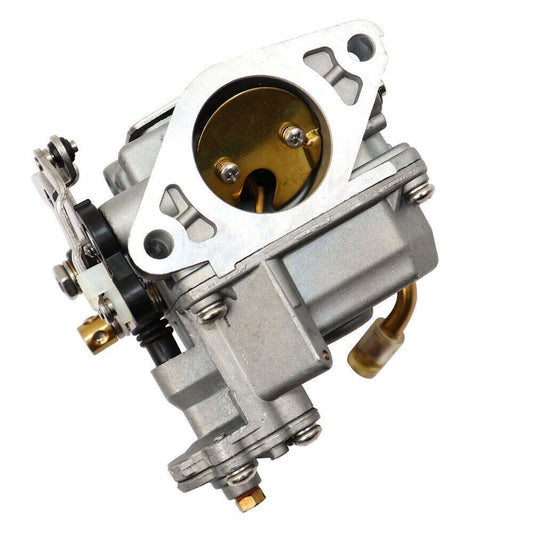
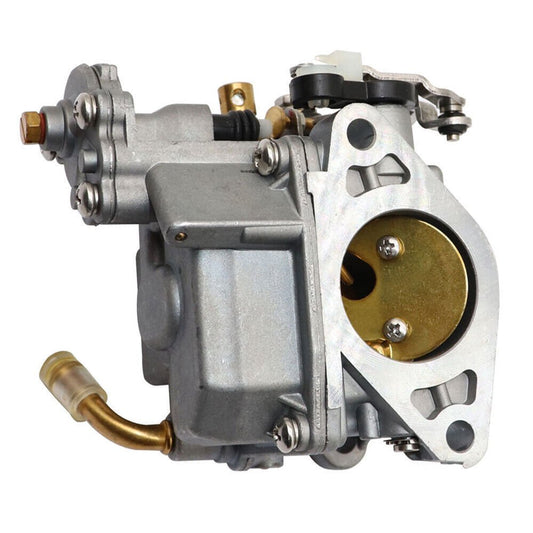

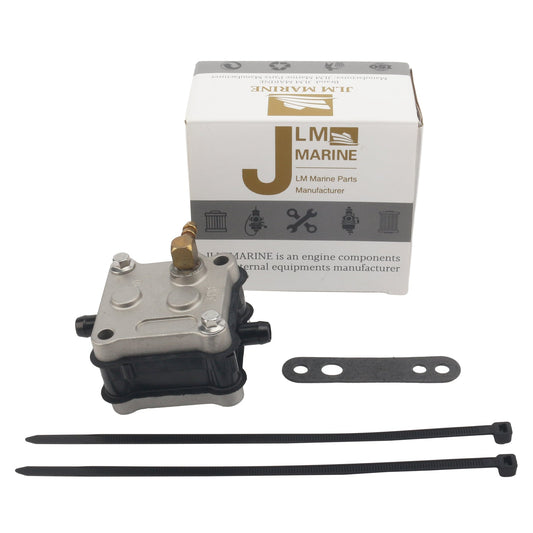


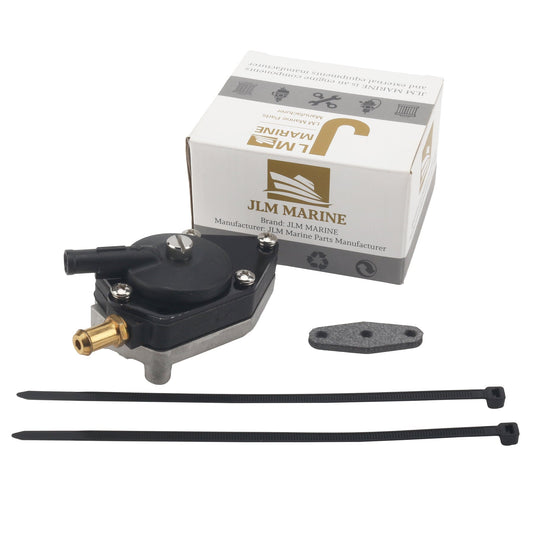

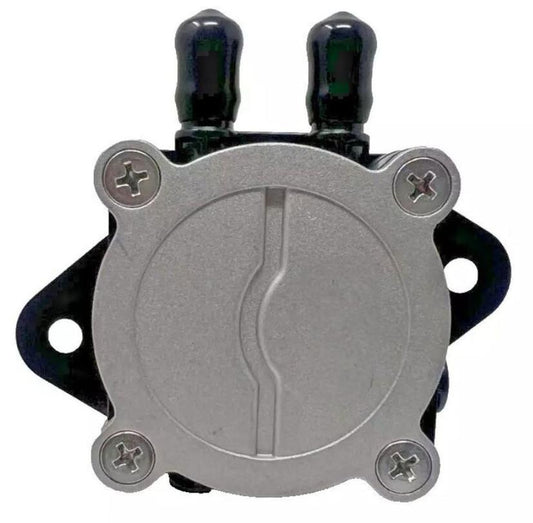
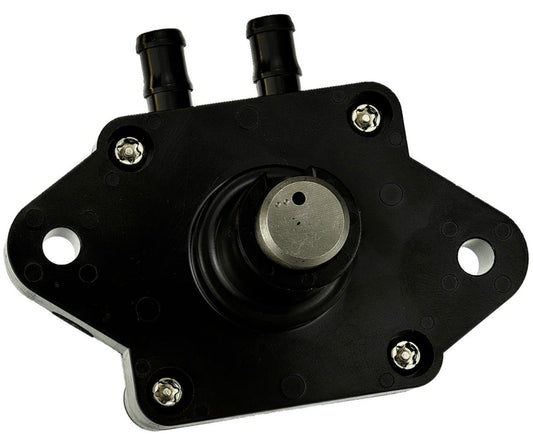

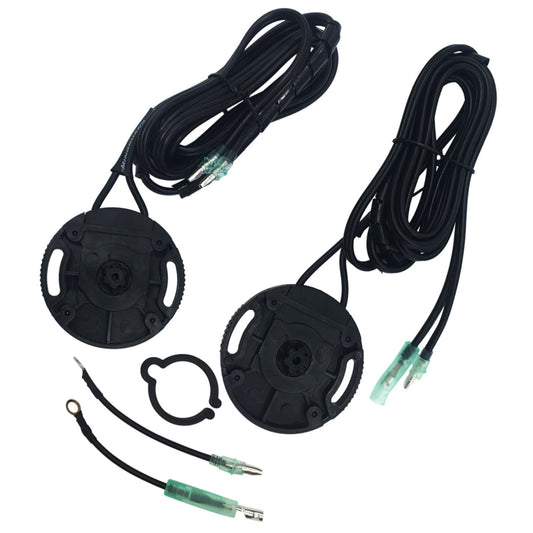

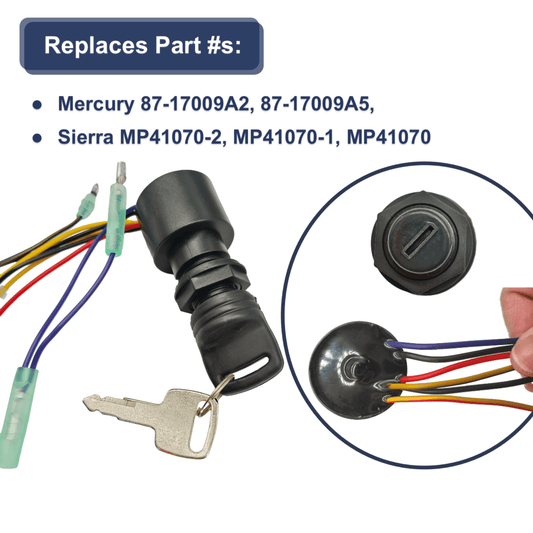
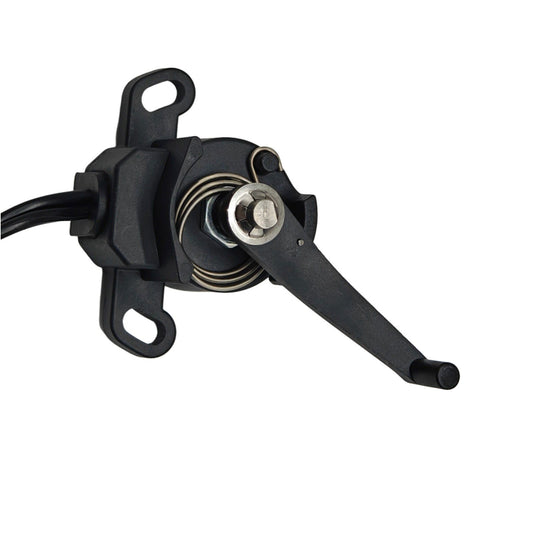
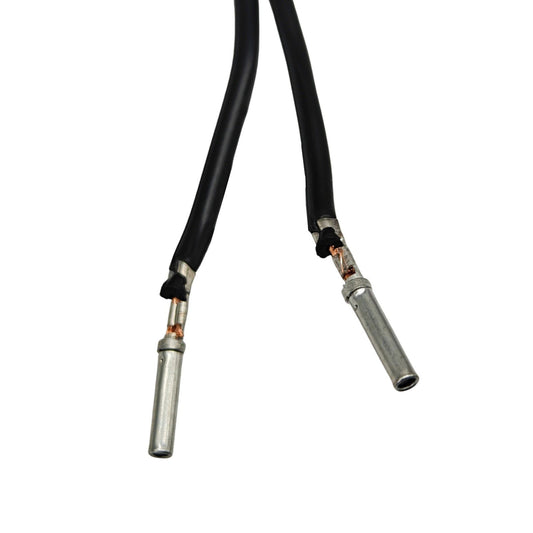
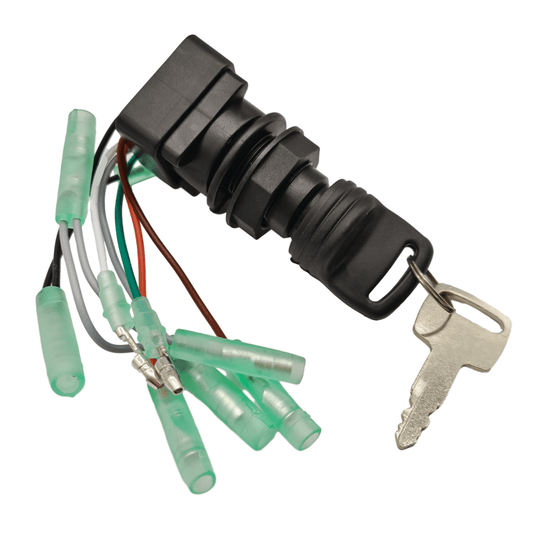
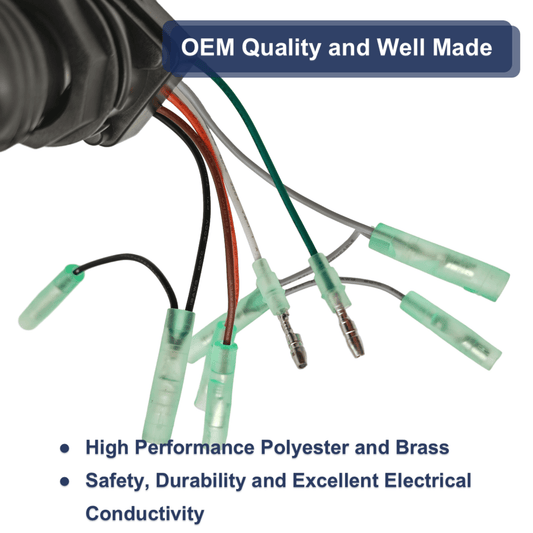

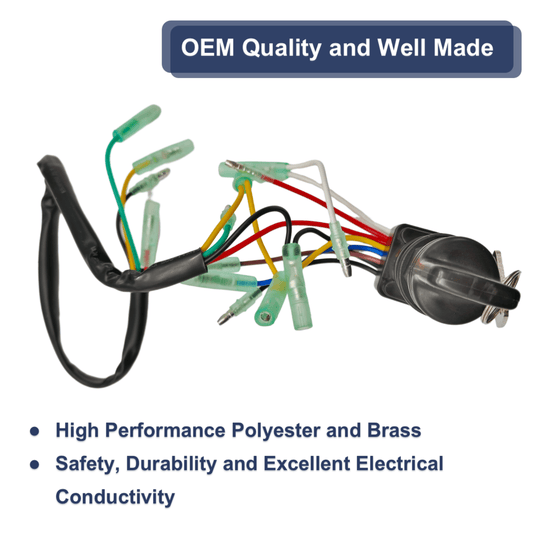

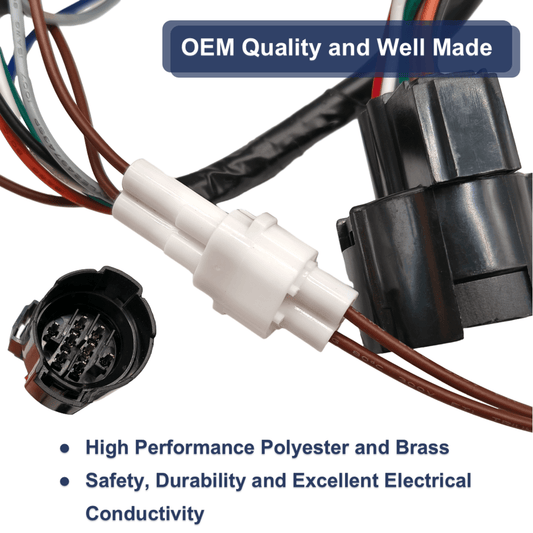

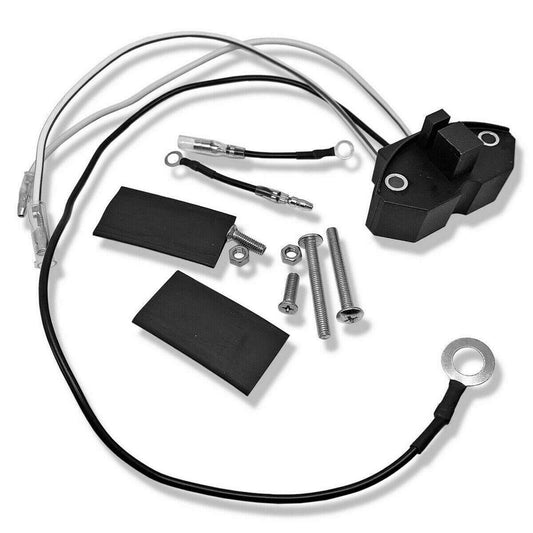

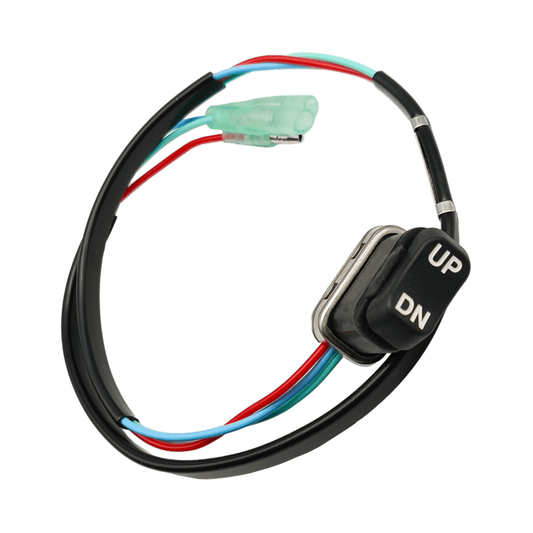
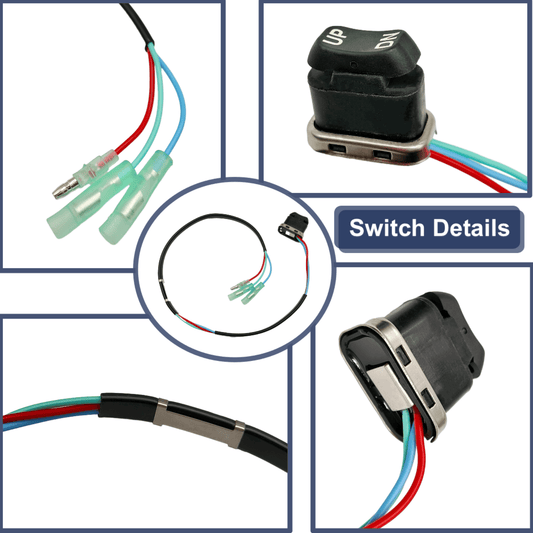
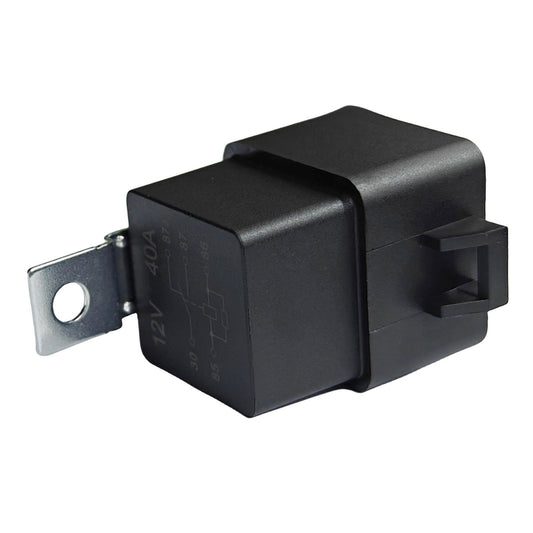
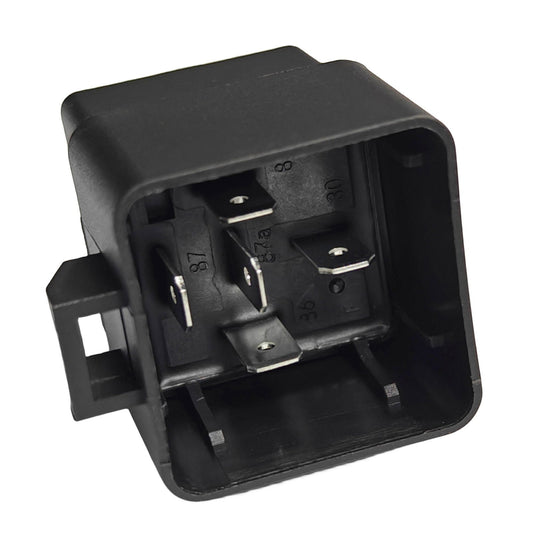










Leave a comment
Please note, comments need to be approved before they are published.